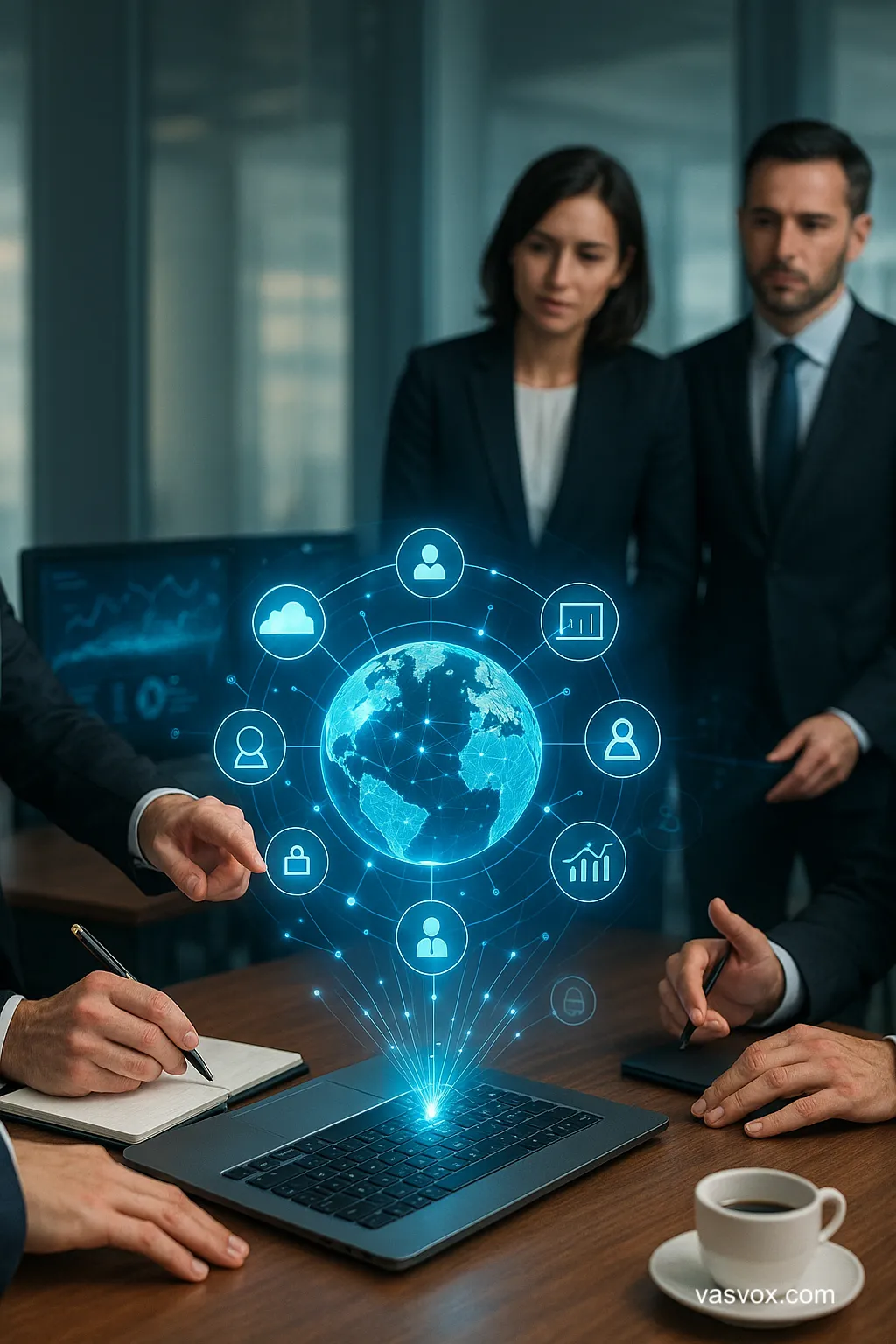Users experience leads Technology.
ทดสอบ Speech Analytics ภาษาไทยบนข้อมูลจริงของคุณ – ฟรี ไม่มีค่าใช้จ่ายในขั้นทดลองใช้เบื้องต้น
ขอ Demo / POC วันนี้Speech Analytics Technology ช่วยในเรื่องคุณภาพโดยการปรับปรุงทักษะของเอเจนต์ การตรวจจับคำห้าม การแจ้งเตือนคุณภาพ รายงานคุณภาพ และการปรับปรุงดัชนีที่ใช้วัดอัตราการแก้ปัญหาได้สำเร็จในสายแรก (FCR)
เทคโนโลยีการวิเคราะห์เสียง Speech Analytics ช่วยเพิ่มประสิทธิภาพในกระบวนการโดยลดปริมาณการโทรเข้าลดลง ปฏิบัติตามสคริปต์อย่างเข้มงวด การค้นหาที่มีประสิทธิภาพ และการแปลงคำพูดเป็นข้อความ Speech-to-Text
เทคโนโลยีการวิเคราะห์เสียง Speech Analytics ช่วยปรับปรุงประสบการณ์ของลูกค้าผ่านทางการตอบรับจากลูกค้า เจาะลึกเรื่องแนวโน้ม ป้องกันการสูญเสียลูกค้า และการตรวจจับอารมณ์ Emotion detection
การใช้เทคโนโลยีการวิเคราะห์เสียง Speech Analytics ช่วยในการขายโดยการระบุความได้เปรียบในการแข่งขัน การระบุศักยภาพในการขาย การระบุความเสี่ยงในการขาย และการตรวจจับหัวข้อ
เทคโนโลยีการวิเคราะห์เสียงช่วย Speech Analytics ในการตรวจจับวลีการปฏิบัติตามกฎข้อบังคับ การจัดหมวดอัตโนมัติ การเอกสารสอบถามการโทรปรึกษา การแจ้งเตือนความเสี่ยง และการตรวจจับฉ้อโกง
เทคโนโลยีการวิเคราะห์เสียงนำเสนอการแจ้งเตือนเรื่องความปลอดภัยสาธารณะ เพิ่มประสิทธิภาพกระบวนการฉุกเฉิน บรรเทาภาระงานสำหรับผู้ส่งสาย และการกำหนดลำดับความสำคัญอย่างรวดเร็ว
ไม่ว่าคุณจะต้องการยกระดับ Contact Center เพิ่มประสิทธิภาพทีมขาย หรือเสริมเกราะด้าน Compliance เทคโนโลยี Speech Analytics ภาษาไทยของ Vasvox พร้อมต่อยอดข้อมูลเสียงที่คุณมีอยู่แล้ว
ใช้บันทึก วิเคราะห์ และตรวจสอบบทสนทนาเพื่อรองรับมาตรฐานด้านกฎหมาย ลดข้อร้องเรียน และเพิ่มคุณภาพบริการลูกค้า
วิเคราะห์ปริมาณสาย ปรับปรุงสคริปต์ทีมเอเจนต์ และค้นหา Insight จากล้านสายต่อเดือนอย่างเป็นระบบ
ตรวจจับสายคุกคาม แจ้งเตือนเหตุฉุกเฉิน และจัดลำดับความสำคัญของเหตุการณ์ด้วย AI
เปลี่ยนการบันทึกเสียงที่มีอยู่แล้ว ให้กลายเป็นข้อมูลวิเคราะห์ ทั้งด้านคุณภาพการบริการ การขาย และประสบการณ์ลูกค้า
การพัฒนาทักษะเจ้าหน้าที่ (Improving Agent Skills) – การใช้เทคโนโลยี AI Speech Analytics เพื่อยกระดับทักษะพนักงานเป็นสิ่งสำคัญต่อธุรกิจยุคใหม่ ระบบสามารถเลือกตัวอย่างการสนทนาเพื่อฝึกอบรม ค้นหาจุดอ่อน และสร้างการสอนเฉพาะบุคคลได้โดยอัตโนมัติ ซึ่งช่วยให้การเตรียมการอบรมและการประเมินผลเป็นไปอย่างมีประสิทธิภาพ เสริมสร้างทักษะระยะยาวและยกระดับ คุณภาพการบริการลูกค้า.
การตรวจจับคำต้องห้าม (Taboo Word Spotting) – การตรวจสอบคำต้องห้ามหรือคำที่อ่อนไหวช่วยให้องค์กรลดความเสี่ยงด้านการสื่อสารที่เกี่ยวข้องกับความรู้สึก ความเชื่อ หรือวัฒนธรรม การระบุคำเหล่านี้ได้ตั้งแต่ต้นช่วยป้องกันความขัดแย้ง ลดความไม่พอใจ และรักษาภาพลักษณ์ที่ดีขององค์กรและ ชื่อเสียงทางธุรกิจ.
การแจ้งเตือนคุณภาพ (Quality Alerting) – การตรวจจับคีย์เวิร์ดแบบเรียลไทม์ที่เกี่ยวข้องกับปัญหาคุณภาพช่วยให้ธุรกิจสามารถแก้ไขได้ทันที ระบบแจ้งเตือนคุณภาพแบบอัตโนมัติช่วยให้ผู้บริหารดำเนินการแก้ไขได้อย่างทันท่วงที ลดความเสี่ยงในการเกิดข้อผิดพลาดซ้ำ และยังสนับสนุนมาตรฐาน Customer Experience (CX).
การรายงานคุณภาพ (Quality Reporting) – การปรับปรุง คุณภาพการบริการลูกค้า เป็นสิ่งสำคัญสำหรับการเติบโตอย่างยั่งยืนของธุรกิจ การใช้เครื่องมืออัตโนมัติช่วยประเมินและจัดหมวดหมู่ข้อมูลการสื่อสาร แสดงผลในรูปแบบแดชบอร์ดและรายงาน ทำให้เข้าใจแนวโน้มและดำเนินการปรับปรุงบริการได้อย่างเป็นระบบ เพิ่มความพึงพอใจของลูกค้าในระยะยาว.


ลดปริมาณสายซ้ำ (Reducing Call Volume) – ระบุสาเหตุหลักของการโทรซ้ำเพื่อยกระดับ First Contact Resolution (FCR) ลดเวลาจัดการ (AHT) และลดการโอน/การโทรกลับ การแก้ปัญหาที่ต้นเหตุในสัมผัสแรกช่วยลดความไม่พอใจของลูกค้าและยกระดับ ประสบการณ์ลูกค้า (CX) ในศูนย์ติดต่อ
การยึดตามสคริปต์ (Script Adherence) – ใช้ Speech Analytics และ Call Recording เพื่อเฝ้าระวังทุกการสนทนา ระบุจุดเบี่ยงเบน ช่องว่างด้าน Compliance และโอกาสในการโค้ช ปรับปรุงสคริปต์ให้กระชับ วัดการยึดตามสคริปต์ของเอเจนต์ และยกระดับคุณภาพงาน QA และอัตราการปิดการขาย
ค้นหาอย่างมีประสิทธิภาพ (Efficient Search) – เลิกค้นหาด้วยมือแล้วใช้ระบบบันทึกที่มีความสามารถ Fast Search ทั้งบนทรานสคริปต์ คีย์เวิร์ด และเมทาดาทา ดึงบทสนทนาที่ต้องการได้ทันที เร่งการตรวจสอบ และเพิ่มประสิทธิภาพการวิเคราะห์เชิงปฏิบัติการ
แปลงเสียงเป็นข้อความ (Speech-to-Text) – แปลงการสนทนาเป็นทรานสคริปต์ที่แม่นยำสำหรับสรุปประเด็น จัดทำเอกสารเคส และติดตามงานหลังการโทร ส่ง Call Transcript ทางอีเมลเพื่อลดความคลาดเคลื่อน สร้างความชัดเจน และลดงานหลังการสนทนา
การวิเคราะห์ Feedback ของลูกค้า (Customer Feedback) – การรับฟังและวิเคราะห์ ความคิดเห็นลูกค้า เป็นหัวใจสำคัญของการพัฒนา ธุรกิจออนไลน์ การใช้ Speech Analytics และ Call Center Analytics เพื่อคัดกรองข้อมูลช่วยให้เข้าใจความต้องการและปัญหาของลูกค้าได้ลึกขึ้น ช่วยยกระดับ Customer Experience (CX) และสนับสนุนการพัฒนาผลิตภัณฑ์อย่างต่อเนื่อง
การจับเทรนด์ (Trend Spotting) – การค้นหา แนวโน้มใหม่ และหัวข้อที่ได้รับความนิยมจากการสนทนาของลูกค้า ช่วยให้องค์กรปรับตัวทันต่อความต้องการของตลาด ปรับกลยุทธ์การตลาด และเพิ่มประสิทธิภาพการบริการได้อย่างทันท่วงที
การป้องกันการสูญเสียลูกค้า (Preventing Customer Churn) – การตรวจจับและแจ้งเตือนสายสนทนาที่มีความสำคัญแบบเรียลไทม์ ช่วยให้องค์กรเข้ามาแก้ไขได้ทันที เสริมสร้างความมั่นใจ ลดความไม่พอใจ และเพิ่มความภักดีของลูกค้า ส่งผลต่อการลดต้นทุนและเพิ่มอัตราการรักษาลูกค้า
การตรวจจับอารมณ์ (Emotion Detection) – การใช้ AI ตรวจจับ อารมณ์ลูกค้า เช่น ความไม่พอใจ ความโกรธ หรือความเร่งด่วนในบทสนทนา เป็นกุญแจสำคัญในการจัดการความสัมพันธ์ลูกค้าเชิงรุก ช่วยให้องค์กรแก้ไขปัญหาได้รวดเร็ว ป้องกันการสูญเสียลูกค้า และยกระดับ Customer Experience อย่างยั่งยืน


การระบุข้อได้เปรียบเชิงการแข่งขัน (Competitive Advantages) – ในยุคที่การแข่งขันทางการตลาดออนไลน์รุนแรง การใช้ การวิเคราะห์คู่แข่งอัตโนมัติ (Competitive Analysis) และ Speech Analytics เป็นเครื่องมือสำคัญเพื่อเร่งเวลาเข้าสู่ตลาด (Time-to-Market) ช่วยให้องค์กรเข้าใจจุดแข็งของตนเอง เปรียบเทียบกับคู่แข่ง และมองเห็นภาพรวมการรับรู้ของลูกค้าได้ชัดเจนขึ้น
การระบุศักยภาพการขาย (Sales Potential) – การวิเคราะห์แนวโน้มความต้องการของลูกค้าและความถี่ของคำขอเฉพาะ ช่วยให้องค์กรค้นพบ โอกาสทางการขาย ได้แม่นยำ การระบุหัวข้อร้อน (Hot Topics) และรูปแบบการสื่อสารช่วยให้วาง กลยุทธ์การขาย ที่ประสบความสำเร็จมากขึ้น
การระบุความเสี่ยงการขาย (Sales Risks) – การวิเคราะห์ ประสบการณ์ลูกค้า (Customer Experience) อย่างเฉพาะเจาะจง โดยเฉพาะสำหรับลูกค้าที่ไม่พอใจ เป็นสิ่งสำคัญ การตรวจจับปัญหาที่เกิดซ้ำและการแก้ไขได้อย่างมีประสิทธิภาพจะช่วยลดความเสี่ยงในการสูญเสียรายได้ และเสริมสร้างความพึงพอใจของลูกค้า
การตรวจจับหัวข้อ (Topic Detection) – การใช้ AI ตรวจจับหัวข้อสนทนาที่เกิดซ้ำบ่อย ช่วยในการสร้าง FAQ และหัวข้อ Self-Service เพื่อพัฒนาประสิทธิภาพการให้บริการ ลดจำนวนสายที่ซ้ำซ้อน และทำให้องค์กรสามารถให้บริการลูกค้าได้ดียิ่งขึ้น
ส่งตัวอย่างไฟล์บันทึกเสียง หรือแชร์โจทย์ธุรกิจของคุณให้เรา ทีม Vasvox ยินดีช่วยออกแบบแนวทางทดลองใช้งานที่เหมาะกับองค์กรของคุณ
ส่งเคสมาให้เราช่วยวิเคราะห์การแจ้งเตือนสายคุกคาม (Threat Call Alert) – ในโลกดิจิทัลที่เต็มไปด้วยความเสี่ยง การรักษา ความปลอดภัยของธุรกิจ ถือเป็นสิ่งสำคัญ การตรวจจับและตอบสนองต่อการบุกรุกแบบเรียลไทม์ผ่าน ระบบแจ้งเตือนสายคุกคาม และการจัดหมวดหมู่สายเข้า ช่วยเพิ่มความปลอดภัยของศูนย์บริการลูกค้า (Contact Center Security) และตอบสนองต่อวิกฤตได้รวดเร็ว
การปรับปรุงกระบวนการฉุกเฉิน (Improved Emergency Processes) – องค์กรต้องให้ความสำคัญกับการจัดการเหตุฉุกเฉินอย่างเป็นระบบ การจัดหมวดหมู่เหตุการณ์และการวางแผนตอบสนองล่วงหน้า ทำให้สามารถตอบสนองต่อเหตุการณ์ต่าง ๆ ได้ทันเวลาและมีประสิทธิภาพ ช่วยให้ธุรกิจดำเนินงานได้ต่อเนื่องแม้ในภาวะวิกฤต
ช่วยลดภาระงานเจ้าหน้าที่รับสาย (Relief for the Dispatcher) – การใช้เทคโนโลยีอย่าง Text-to-Speech และการทำงานอัตโนมัติช่วยเจ้าหน้าที่ลดเวลา ลดความผิดพลาด และเพิ่มประสิทธิภาพในการสื่อสาร การสร้างเอกสารและโปรโตคอลอัตโนมัติช่วยให้งานเป็นระบบและลดภาระในสถานการณ์ฉุกเฉิน
การจัดลำดับความสำคัญที่รวดเร็ว (Fast Prioritization) – ในสภาพแวดล้อมที่เปลี่ยนแปลงรวดเร็ว การใช้ AI และ Speech Analytics เพื่อจัดลำดับความสำคัญของสายสนทนาและเหตุการณ์แบบอัตโนมัติเป็นสิ่งจำเป็น ช่วยตรวจจับวิกฤตล่วงหน้า ลดระยะเวลาในการตัดสินใจ และสร้าง การแจ้งเตือนแบบเรียลไทม์ เพื่อการตอบสนองทันที


การตรวจจับวลีด้านการปฏิบัติตามกฎระเบียบ (Compliance Phrase Spotting) – การตรวจจับอัตโนมัติว่ามีการใช้ข้อความตามข้อกำหนดหรือไม่ ถือเป็นวิธีที่มีประสิทธิภาพในการระบุ ความเสี่ยงด้านการไม่ปฏิบัติตามกฎหมาย การตรวจพบการเบี่ยงเบน เช่น การใช้ข้อความไม่ถูกต้อง เป็นเครื่องมือสำคัญที่ช่วยส่งเสริมการปฏิบัติตามข้อบังคับทางกฎหมาย และการแสดงรายการการสนทนาที่ไม่ปฏิบัติตามช่วยให้องค์กรปรับปรุงนโยบายและกระบวนการได้ดียิ่งขึ้น
การจัดหมวดหมู่อัตโนมัติ (Auto-Categorization) – การจัดหมวดหมู่สายสนทนาตามความเกี่ยวข้องกับข้อกำหนดการปฏิบัติตามกฎระเบียบ พร้อมการเก็บถาวรอัตโนมัติตามระยะเวลาที่กำหนด ช่วยให้องค์กรจัดการข้อมูลอย่างเป็นระบบและรองรับการตรวจสอบด้านกฎหมายในอนาคต
การจัดทำเอกสารสำหรับการสนทนาที่ปรึกษา (Documentation of Consultancy Calls) – การถอดความการสนทนาเพื่อใช้ในการอนุมัติภายหลังหรือเป็นหลักฐานช่วยลดเวลาในการทำเอกสารแบบแมนนวล ทำให้งานมีความถูกต้องและสอดคล้องกับการรายงานด้านการปฏิบัติตามกฎระเบียบ
การแจ้งเตือนความเสี่ยง (Risk Alerting) – การกรองการสนทนาจำนวนมากด้วยระบบอัตโนมัติสามารถระบุพฤติกรรมที่น่าสงสัยจากลูกค้าหรือพนักงานได้ พร้อมทั้งสร้างการแจ้งเตือนแบบเรียลไทม์ เพื่อให้องค์กรตอบสนองต่อภัยคุกคามด้านกฎหมายได้อย่างทันทีและมีประสิทธิภาพ
การตรวจจับการฉ้อโกง (Fraud Detection) – การตรวจพบความเสี่ยงในการไม่ปฏิบัติตามข้อกำหนดในกระบวนการต่าง ๆ ตั้งแต่เนิ่น ๆ ช่วยป้องกันค่าปรับและบทลงโทษ ระบบการวิเคราะห์สนทนาอัตโนมัติช่วยให้องค์กรระบุข้อมูลสำคัญและเปรียบเทียบกับมาตรฐานทางกฎหมายได้อย่างรวดเร็วและแม่นยำ
เทคโนโลยี Speech Analytics ของ Vasvox ถูกออกแบบโดยยึดหลัก Privacy by Design รองรับแนวปฏิบัติด้าน PDPA, GDPR และมาตรฐานสากรณ์สำหรับองค์กรภายใต้ข้อกำกับ
เราสามารถทำงานร่วมกับโครงสร้าง On-Premise, Hybrid และ Cloud รวมถึงการจัดเก็บข้อมูลในศูนย์ข้อมูลที่อยู่ในประเทศไทยตามข้อกำหนดขององค์กร
ทีมของเราพร้อมทำงานร่วมกับ DPO ฝ่ายกฎหมาย และฝ่าย IT เพื่อออกแบบแนวทางใช้งานที่ปลอดภัย โปร่งใส และตรวจสอบย้อนหลังได้
นัดคุยเรื่อง PDPA & Compliance
Speech Analytics เป็นเครื่องมือสำคัญสำหรับองค์กรธุรกิจในการปฏิบัติตามข้อกำหนดด้านกฎหมาย เช่น GDPR และ PDPA โดยช่วยวิเคราะห์การสนทนาระหว่างลูกค้าและพนักงาน เพื่อยืนยันการปฏิบัติตามกฎระเบียบ ปรับปรุงกระบวนการทำงาน และรักษามาตรฐานด้านจริยธรรม นอกจากนี้ยังช่วยลดความเสี่ยงด้าน การรั่วไหลของข้อมูลส่วนบุคคล และสร้างความเชื่อมั่นให้กับลูกค้า
สำหรับภาครัฐและด้าน ความปลอดภัยสาธารณะ การใช้ Analytics ถือเป็นส่วนสำคัญของโครงสร้างพื้นฐานในทุกเมือง ไม่ว่าจะเป็นการป้องกันภัยพิบัติหรือการตอบสนองในภาวะฉุกเฉินที่ต้องอาศัยความร่วมมือจากหลายภาคส่วน โซลูชันของเราช่วยสนับสนุนองค์กรในการจัดการความปลอดภัยสาธารณะได้อย่างมีประสิทธิภาพและทันเวลา
ด้วยการผสาน Speech Analytics เข้ากับงานด้าน Compliance และความปลอดภัยสาธารณะ องค์กรสามารถลดความเสี่ยงจากการละเมิดข้อมูล ปรับปรุงการตัดสินใจ และสร้างสภาพแวดล้อมที่ปลอดภัยและโปร่งใสมากขึ้น ทั้งยังเสริมความเชื่อมั่นของประชาชนต่อการจัดการข้อมูลที่อ่อนไหวอย่างปลอดภัย


ภาพนี้แสดงการทำงานของ ระบบบันทึกเสียงและวิดีโอ ที่ผสานเข้ากับ Microsoft Azure และ Microsoft 365 ผ่านแพลตฟอร์ม ASC Recording Insights โดยข้อมูลถูกจัดเก็บใน Blob Storage เพื่อความปลอดภัยและการเข้าถึงที่รวดเร็ว ผู้ใช้งานสามารถค้นหาและเล่นข้อมูลที่บันทึกได้ผ่านอินเทอร์เฟซที่ใช้งานง่ายของ ASC Recording Insights ซึ่งช่วยเพิ่มประสิทธิภาพในการตรวจสอบและการวิเคราะห์ข้อมูล
ระบบบันทึก (Recorder) จะส่งข้อมูลไปยัง Database Server ผ่านกระบวนการ Export Job และ ASC จะนำเข้าข้อมูลจาก DB Server ผ่าน CIFS/SMB protocol โดยใช้พอร์ต TCP 445 และ 139 จากนั้นข้อมูลทั้งหมดถูกส่งเข้าสู่ ASC neo ซึ่งเป็นระบบหลักสำหรับการบันทึกเสียง ก่อนจะผสานเข้ากับ ASC Recording Insights เพื่อจัดเก็บใน Microsoft Azure Blob Storage อย่างปลอดภัย
โซลูชันนี้ช่วยให้องค์กรสามารถ บันทึก จัดเก็บ ค้นหา และเล่นซ้ำข้อมูลเสียงและวิดีโอ ได้อย่างมีประสิทธิภาพ รองรับการตรวจสอบย้อนหลังและการทำงานตามมาตรฐาน Compliance ที่เข้มงวด ทั้งนี้ ASC Recording Insights สามารถ Integrate เข้ากับระบบ Recorder เดิมที่องค์กรมีใช้อยู่แล้วได้ แม้ไม่ใช่ยี่ห้อ ASC ก็ตาม ช่วยลดค่าใช้จ่ายและความซับซ้อนในการเปลี่ยนระบบใหม่ทั้งหมด
เราคือผู้เชี่ยวชาญด้าน Speech Analytics และ Voice Recording Integration ที่พร้อมสนับสนุนองค์กรในประเทศไทยและภูมิภาคอาเซียน หากคุณกำลังมองหาโซลูชันที่เชื่อถือได้ในการจัดการข้อมูลเสียงและวิดีโออย่างปลอดภัย ติดต่อ Vasvox เพื่อเริ่มต้นยกระดับศูนย์การสื่อสารของคุณวันนี้
เทคโนโลยี Speech Analytics ของ Vasvox ไม่ได้เป็นเพียงระบบถอดเสียง แต่เป็นการยกระดับการสื่อสารทั้งองค์กร ด้วยความสามารถในการวิเคราะห์หลายภาษา ทั้งไทย อังกฤษ และภาษาในภูมิภาค — ในแพลตฟอร์มเดียวอย่างไร้รอยต่อ
เราใช้ Microsoft Azure AI / Cognitive Services เป็นแกนกลางด้าน Speech-to-Text รองรับมากกว่า 100 ภาษา โดยไม่ต้องสร้างหรือเทรนโมเดลเอง Azure จะอัปเดตความแม่นยำให้แบบอัตโนมัติ ช่วยลดต้นทุนรวม (TCO) ลดเวลา Deploy และเพิ่มความเร็วในการได้ผลลัพธ์เชิงธุรกิจ

อดีตระบบ Speech Analytics ส่วนใหญ่ใช้การวิเคราะห์เสียงแบบ Phonetics-Based คือจับหน่วยเสียง (Phoneme) แล้วเทียบกับดิกชันนารี วิธีนี้แม้เคยเป็นมาตรฐาน แต่มีข้อจำกัดมากในโลกจริง:
Vasvox ใช้สถาปัตยกรรมใหม่แบบ Neural Speech-to-Text → NLP → Semantic Analysis ที่แปลงเสียงเป็นข้อความเต็ม (Full Transcription) ก่อนวิเคราะห์ ทำให้ระบบ
นี่คือการก้าวจากการ “จับเสียง” ไปสู่การ เข้าใจความหมายของการสนทนา เพื่อผลลัพธ์เชิงธุรกิจ การฝึกทีมบริการ และการกำกับดูแลอย่างแท้จริง
ระบบ AI ตรวจสอบคุณภาพการสนทนาอย่างอัตโนมัติ ครอบคลุมการกล่าวทักทายอย่างเหมาะสม (Greeting) การแจ้ง PDPA การยืนยันตัวตนของลูกค้า (Identity Verification) การปฏิบัติตามสคริปต์ (Script Adherence) และตรวจจับพฤติกรรมแบบ Mis-Selling
AI ตรวจพฤติกรรมของ Agent—ไม่ใช่เฉพาะคำพูดเสี่ยง แต่รวมถึงสิ่งที่ควรพูดแล้วไม่ได้พูด เหมาะสำหรับ Contact Center, Telesales และหน่วยงานกำกับดูแลภายในองค์กร ที่ต้องการยกระดับมาตรฐานการสื่อสาร พร้อมหลักฐานดิจิทัลแบบตรวจสอบย้อนหลังได้
เรียนรู้เพิ่มเติมไม่ว่าคุณจะเริ่มจากโครงการทดลองเล็ก ๆ ในทีมเดียว หรือ rollout ทั้งองค์กร Vasvox พร้อมช่วยออกแบบ Roadmap ด้าน Speech Analytics ให้เหมาะกับบริบทของคุณ
นัดคุยกับผู้เชี่ยวชาญ ส่งโจทย์โครงการมาคุยผ่านอีเมล